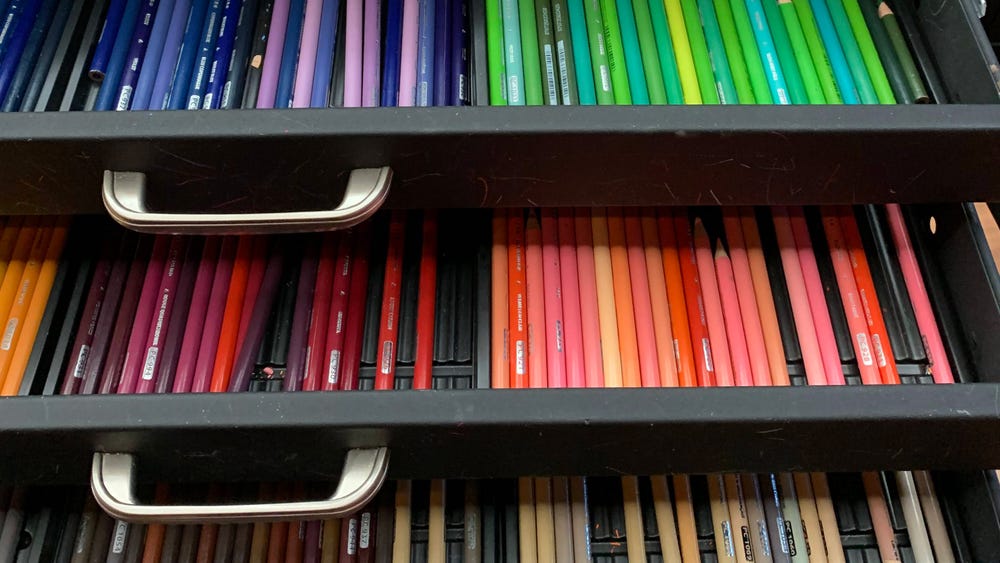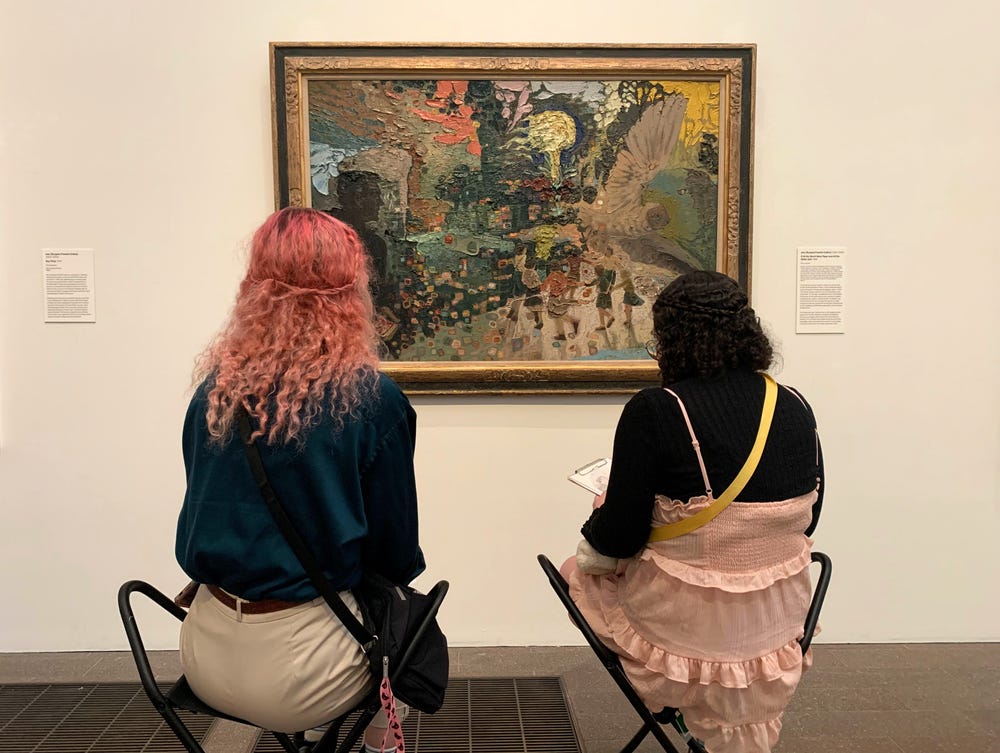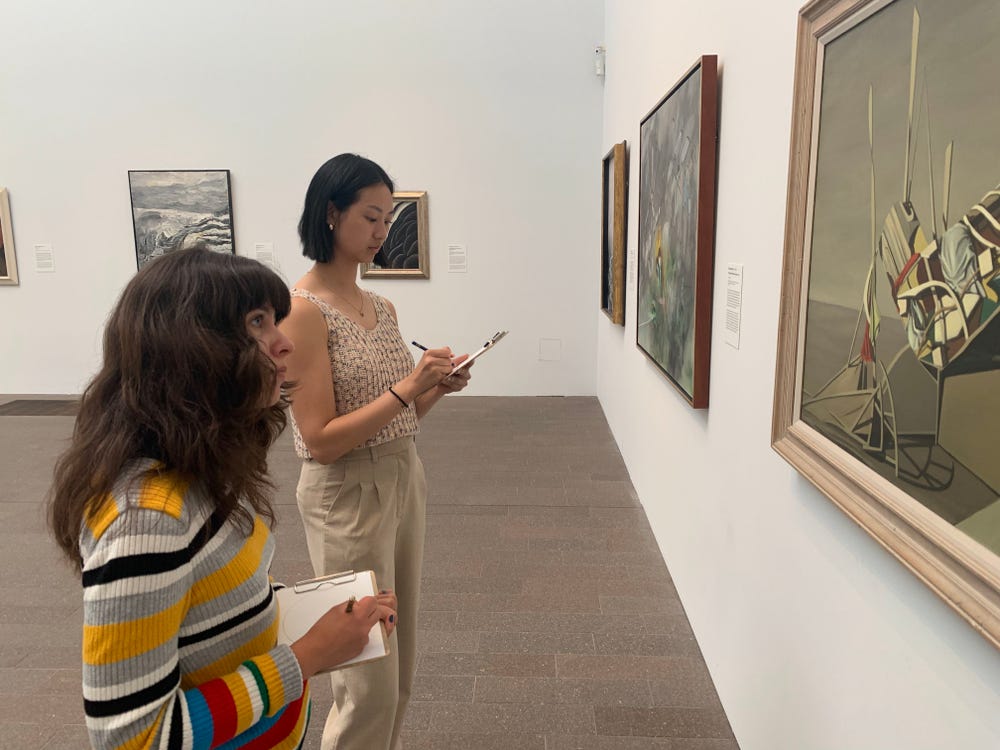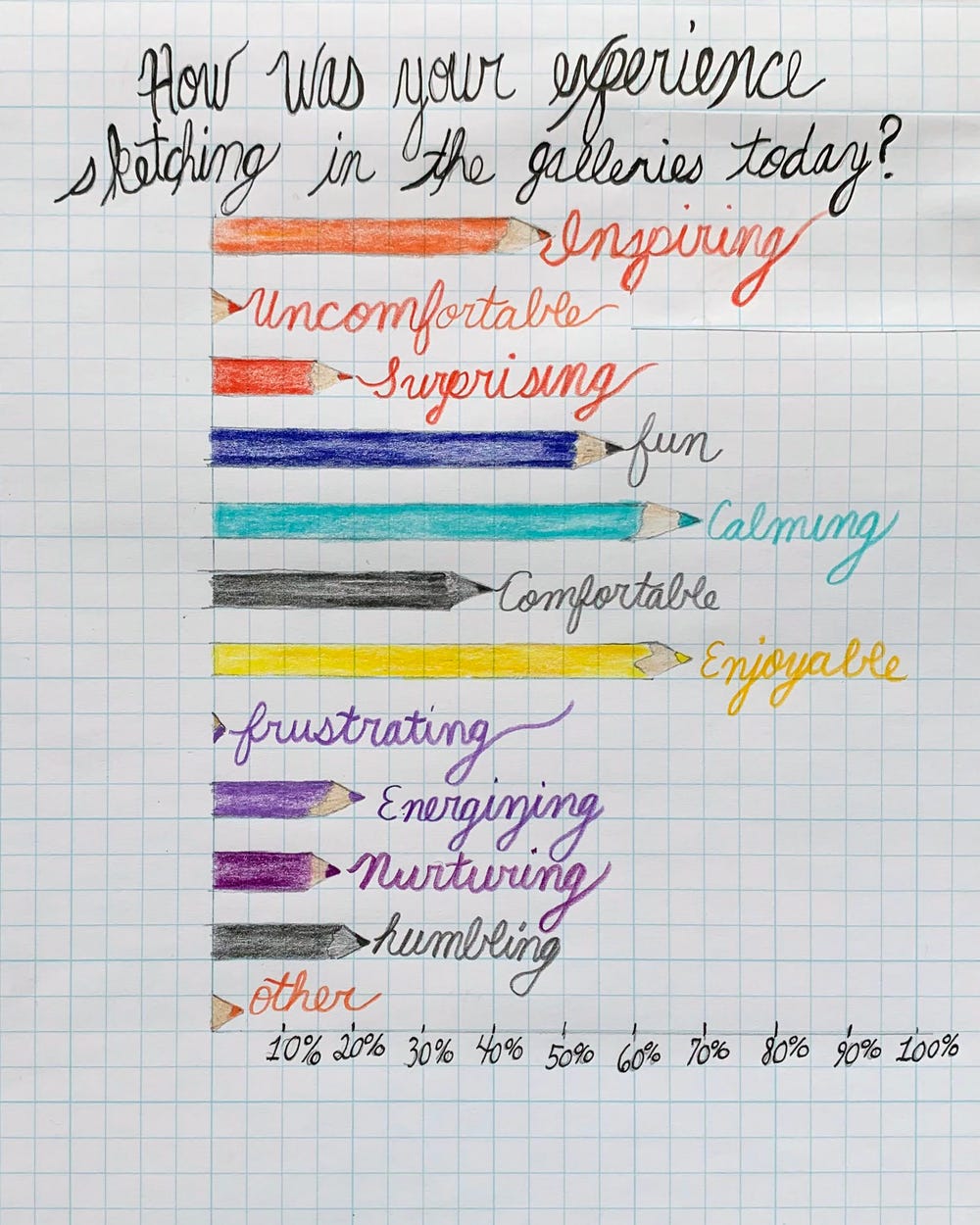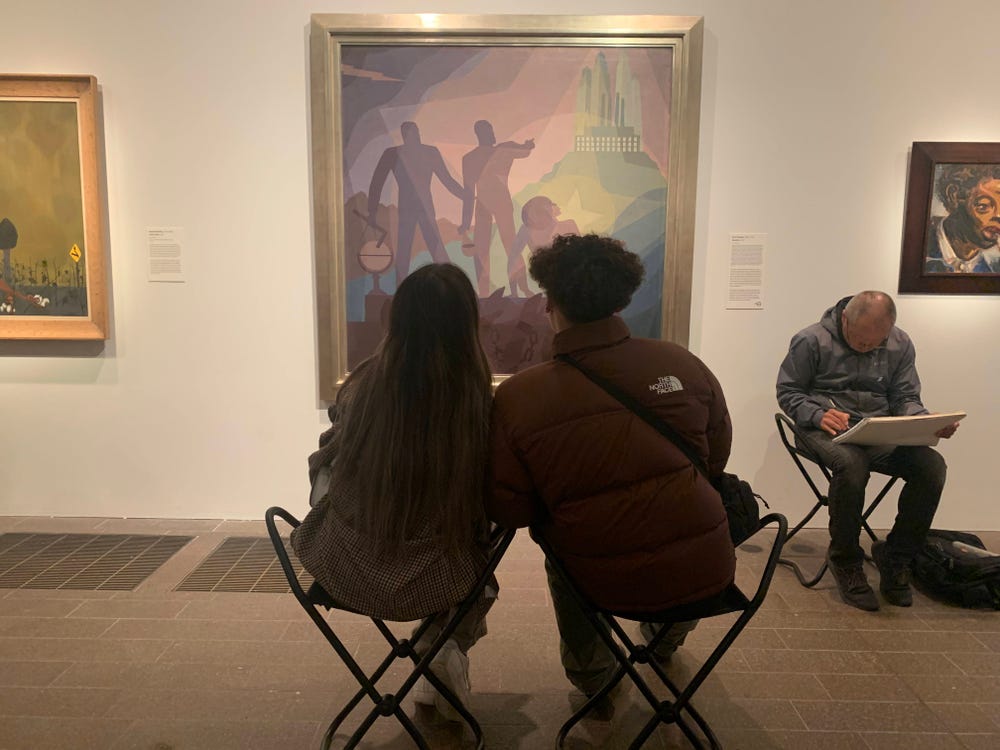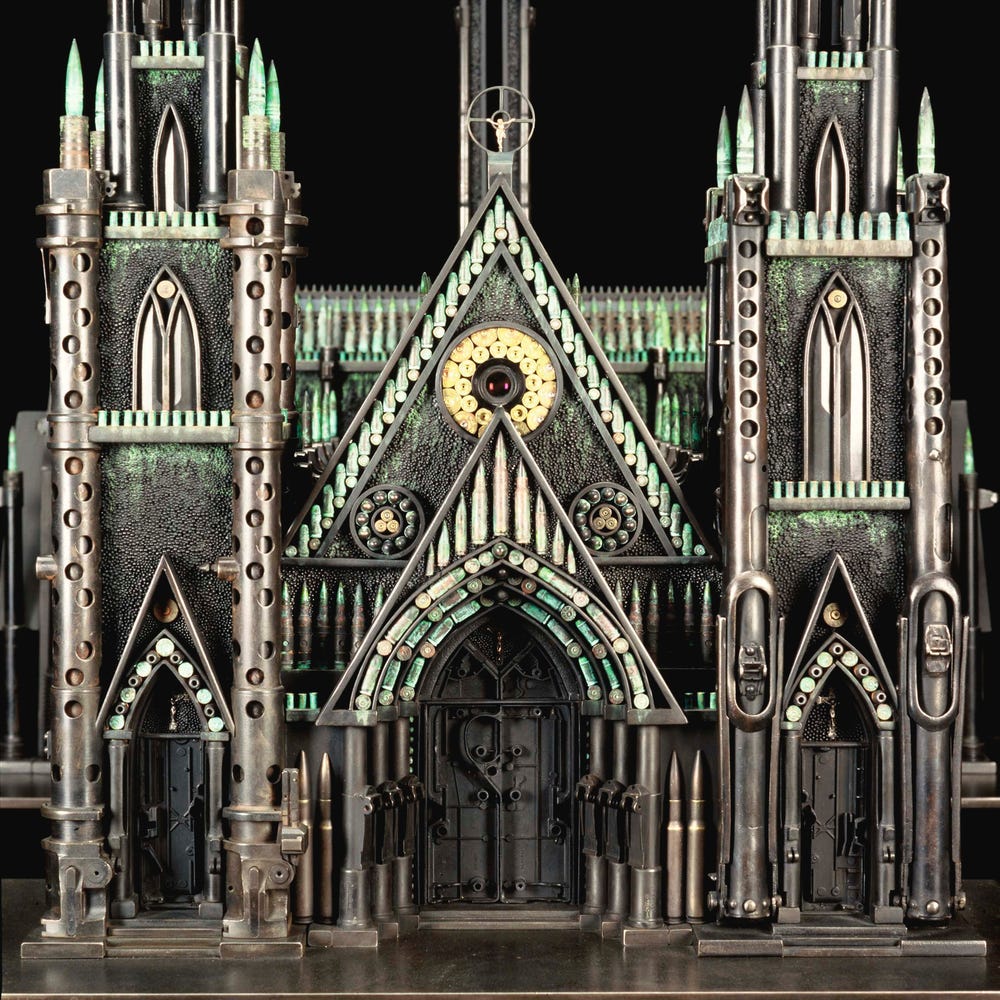6 Reasons Sketching Is Good for You, Even If You’re Bad at It
By Jennie Smith, project manager for Vitality Arts, and Anu Vaalas, project manager for school and family programs
July 13, 2023
Sketching is a good practice for all ages and, surprise, it has nothing to do with the end result. It’s all about the process — a process that improves our general well-being. Young children typically draw from their imaginations; it’s how they express their understanding of the world. However many of us stop sketching in adolescence, when we develop a preference for realistic drawing and find our natural ability doesn’t match up. But it’s never too late to start up again. While we may prefer to pursue activities we’re “good” at, this can lead to a creative rut and stop us from taking risks. Embracing low-stakes risk-taking and leaning into being a beginner offers its own, sometimes unexpected, rewards.
1. Develops creative thinking
When you sketch, you are building new connections in your brain. During close observational sketching (sketching from an existing artwork), you slow down and notice new details, gaining insight into how the artwork was made. As you make discoveries about the world around you, you can also begin to imagine new, unseen worlds. To be creative is to see something in an original way and be willing to leap into the unknown.
Sketching in the Gallery, de Young, 2023. Photograph by Anu Vaalas.
2. Increases empathy
Art making puts you in a more vulnerable state, especially if you are not a practicing artist. By turning off your inner critic, you are not only kinder to yourself but also more accepting of others. (If you are a parent, trying something uncomfortable and new is also a wonderful modeling opportunity.) As you veer past your comfort zone into a learning mode, you may develop more understanding and patience for those around you.
3. Improves motor skills and coordination
A sketching habit strengthens fine motor skills and hand-eye coordination. New pathways form and, according to studies, increase blood flow to the reward center in your brain. You are training your eyes to deliver visual information to your brain, which, in turn, communicates with your hand. Because observational drawing requires logic and creativity, both the right and left sides of your brain are activated. Increased motor skills and coordination lead to many other mental and physical benefits, including recall and agility.
Sketching in the Gallery, de Young, 2023. Photograph by Anu Vaalas.
4. Helps you practice mindfulness
At its core, sketching is paying attention. Not only do you become more tuned in to what you are sketching, but also to your feelings, thoughts, and environment. This lets you be present in the moment. Mindfulness has been associated with many physical, social, and psychological benefits. So the next time you sketch, take a deep breath and pay close attention to each of your senses — the sound of your pencil on paper, the weight of the clipboard — in addition to whatever is in front of you.
Sketching graph. Illustration by Jennie Smith.
5. Makes you happier
Taking the time to sketch has emotional benefits. When asked to consider their feelings after sketching in our museum, most visitors (regardless of ability) expressed feeling calm (67%). Yes, for some, it felt a little humbling (21%), but positive emotions far outweighed negative ones. As many of our respondents advise: “Don’t think too hard, just have fun with it.”
Sketching in the Gallery, de Young, 2023. Photograph by Anu Vaalas.
6. Increases connection
We live in an increasingly isolated world. Sketching helps you connect with yourself and others. Creating is a mode of expression that validates your individuality and improves self-esteem. It not only helps you see yourself, but also makes you more curious about others and the world around you. Perhaps you'll share a discovery you made with someone and ask them what they noticed in turn. Observing something in the physical world connects you to the people and places around you in that moment.
Closing tips
Engaging in any artistic medium will have these benefits, and we hope this inspires you to embark on or return to your own art practice, whether or not that’s sketching. Here are a few tips to get you started.
- Start small. Spend just 5 to 10 minutes on a sketch.
- You don’t have to keep your artwork or show it to anyone else. Rip it up if you don’t like it.
- Instead of judging your artwork as good or bad, focus on the process: How did it feel? What did you notice? What do you want to try next time?
